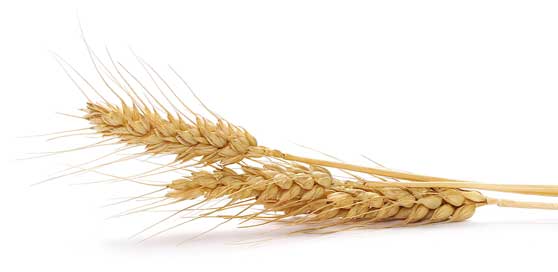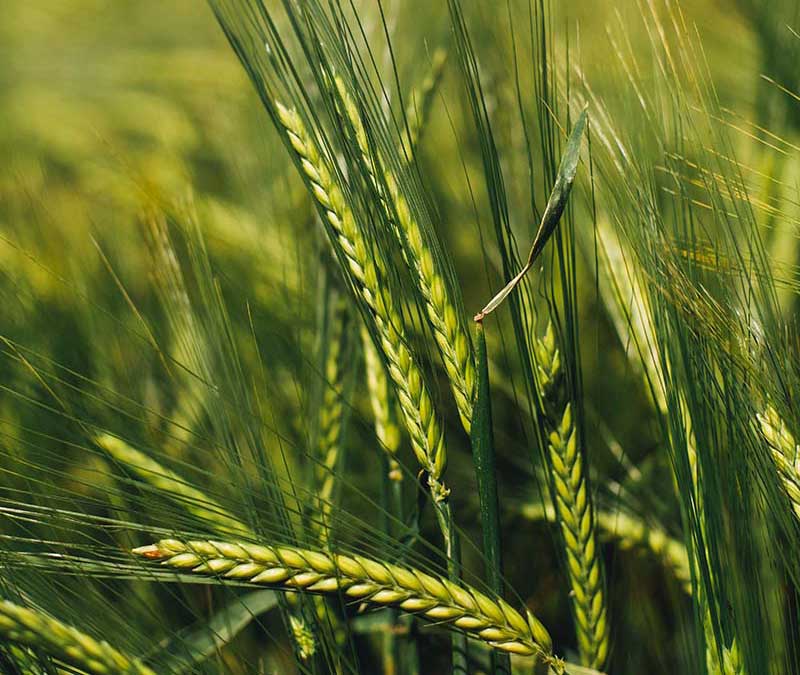Spelt – History
Spelt was developed from wild grasses over 5000 years ago. First cultivated in Asia, it later came to Europe, where it was then introduced to Southwest Germany

150 years ago around 400,000 hectares of spelt were being grown. Today the area under cultivation is around 40,000 hectares, but this trend is on the rise. The more productive wheat had at times almost replaced spelt. Spelt has lower yields than wheat. It is a frugal plant that grows on poor and stony soils, even at high altitudes. There is little need for fertilization; organic fertilizer is usually self sufficient.
Natural protection against environmental toxins

Spelt has a husk that wraps around each individual grain like a safe. This husk must be removed in a separate process before grinding.
This process, previously seen as a disadvantage, is now more of an advantage:
- The husk shell serves to protect the grain from all environmental toxins.
- When stored, the seed of the grain is always well ventilated in the husk and doesn’t go mouldy.
- Spelt is resistant to fusarium and therefore free from fusarium toxins
.
Other advantages of spelt
However, spelt has other special properties that explain its increasing importance for health today:

-
Spelt has a higher vitamin content than wheat. Vitamins B1, B2, B6 and E are all more highly concentrated in spelt than in wheat
- According to a study by the University of Hohenheim, spelt absorbs less heavy metals than wheat.
- Spelt has high levels of unsaturated fatty acids, especially linoleic and linolenic acids.
- Spelt contains Thiocyanate which is a vitalizing, immune-stimulating anti-inflammatory.
- Spelt has a high proportion of L-Tryptophan: the activating ingredient for the mood hormone and neurotransmitter serotonin.
- Spelt has a higher mineral content and a higher phytase activity than wheat. This makes it more digestible.
- Most allergy sufferers, especially those allergic to wheat, tolerate spelt well.
Hildegard von Bingen
These and many other attractive properties are what prompted the great natural healer Hildegard von Bingen to make the following statement over 800 years ago:
“Spelt is the best grain, it has a warming effect, is of high quality and is milder than all other grains. Those who eat spelt form good muscle. Spelt leads to better blood, gives a relaxed mind and the gift of cheerfulness. Any way you prepare it, when you eat spelt – one way or another – cooked as bread or another dish, in a nutshell, spelt is easy to digest and good for you. “
(Hildegard von Bingen, Physician)
There is really nothing to add to this statement from St. Hildegard, which has been valid for generations. As a summary of that one could say today
Good for those who eat spelt, because it is more beneficial to your health.
Dinkelbäcker in the South of Tenerife
We have always baked traditionally with freshly ground spelt.
Of course, there are also 100% spelt breads that are ideal for all wheat allergy sufferers.
VISIT US!
Tuesday - FRIDAY (Monday CLOSED)
8.00am - 2.00pm
SATURDAY
8.00am - 1.00pm
ADDRESS
Avda. Tenbel 30
Poligono Industrial Las Chafiras
38639 Las Chafiras



